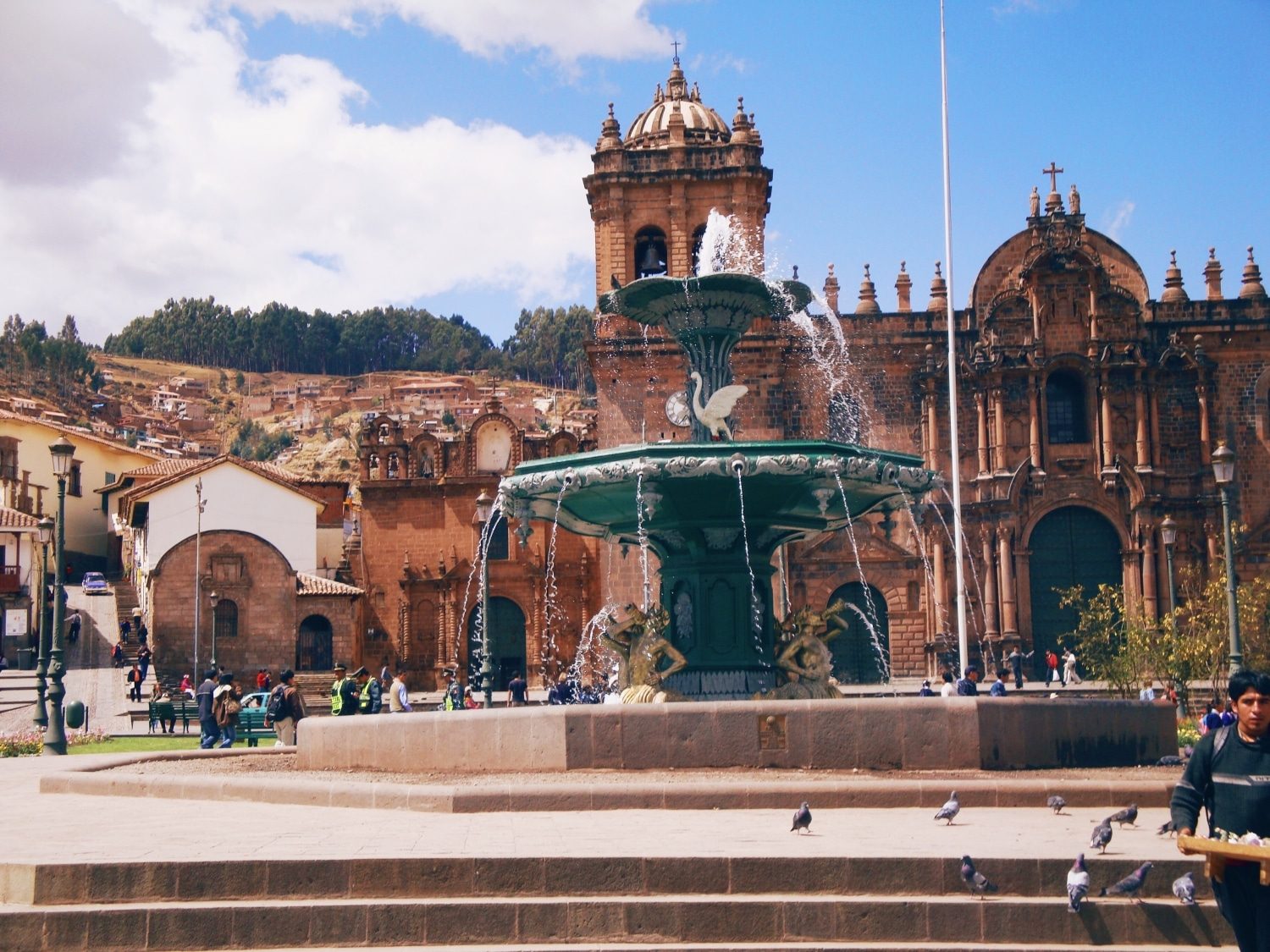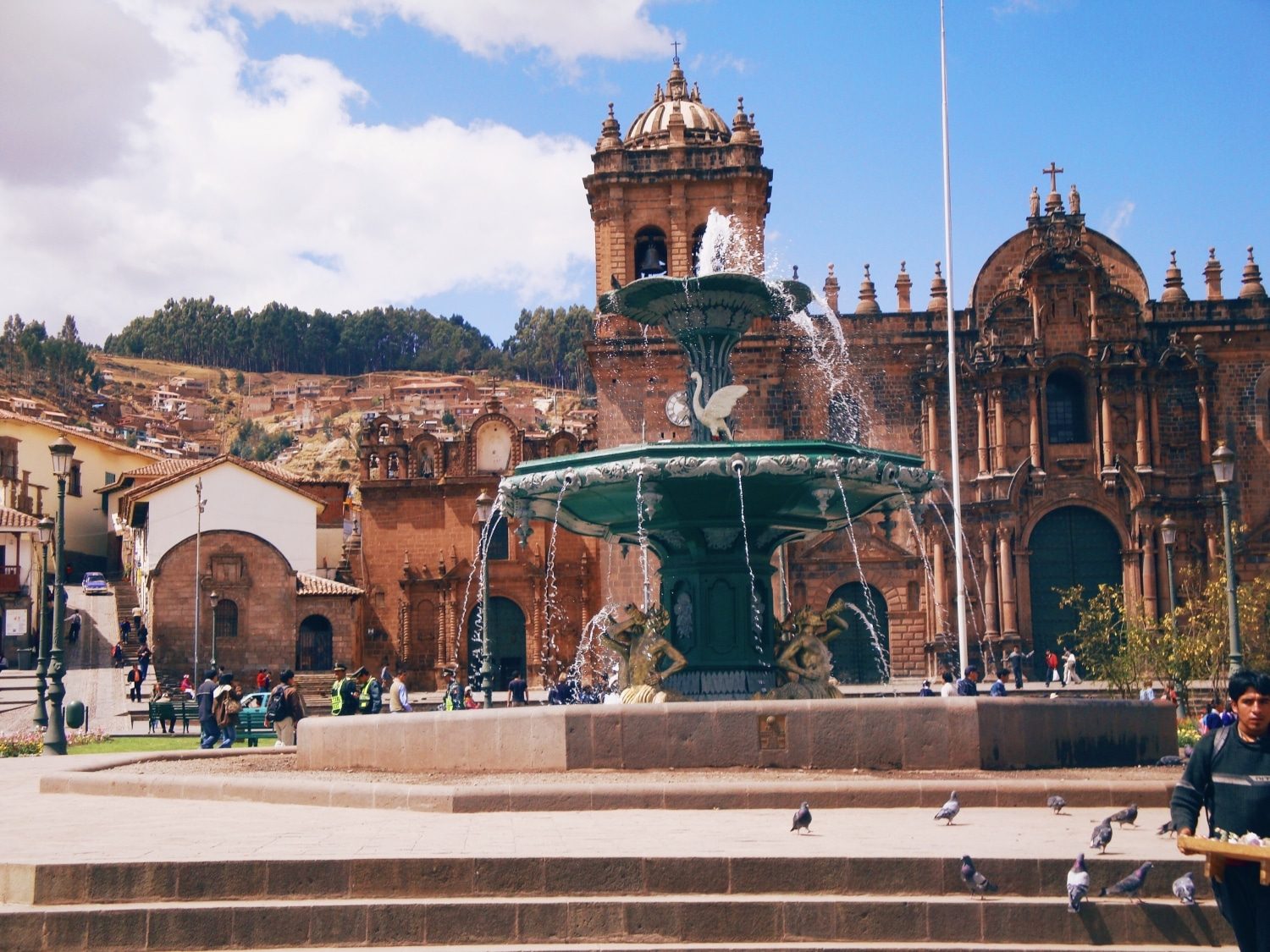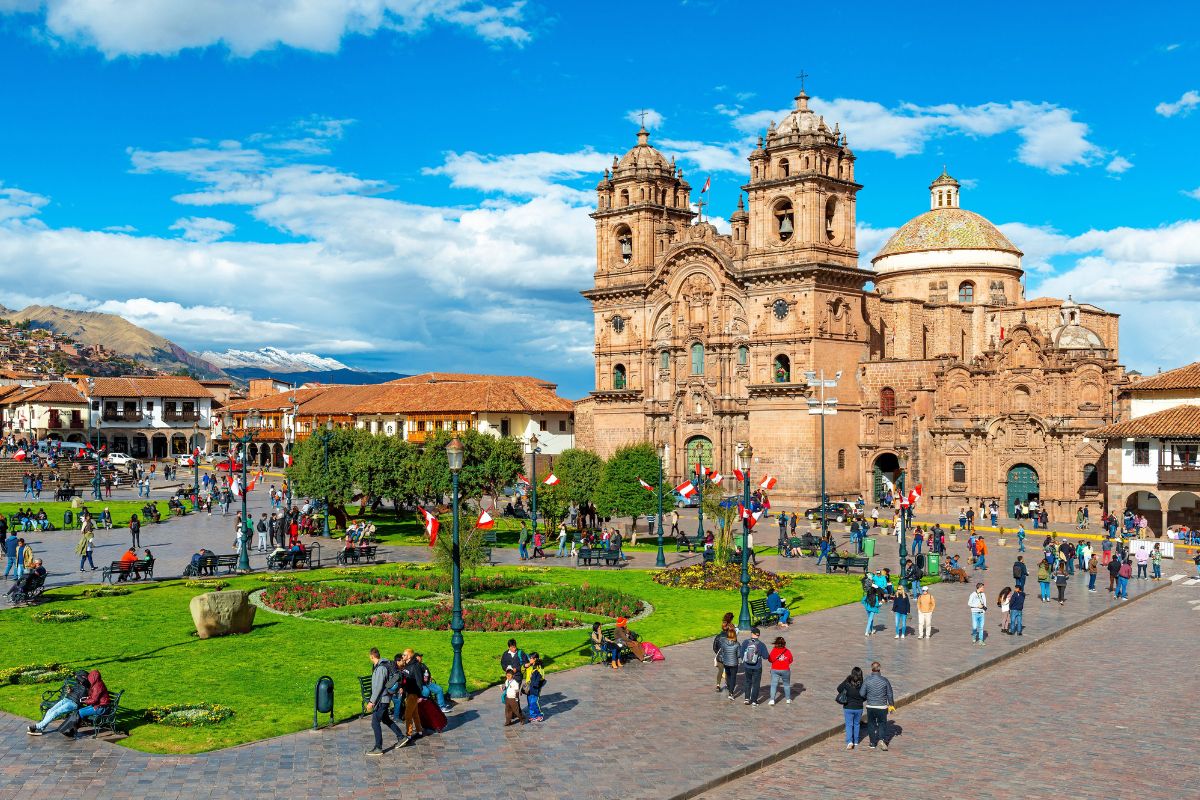
Cusco, a city cradled high in the Peruvian Andes, is more than just a gateway to Machu Picchu; it’s a vibrant tapestry woven from Inca grandeur, Spanish colonial elegance, and a pulsating modern spirit. Once the illustrious capital of the vast Inca Empire, this UNESCO World Heritage site still breathes with the echoes of a powerful past, evident in its meticulously crafted stone walls and the sacred aura that permeates its plazas. Today, Cusco offers a captivating blend of historical immersion, cultural exploration, and thrilling adventures, drawing travelers from every corner of the globe.
This comprehensive guide will equip you with everything you need to know to unlock the magic of Cusco, from its must-see attractions and rich history to practical travel tips, accommodation, transportation, and the optimal time to plan your Andean sojourn.
A Glimpse into Cusco’s Storied Past

Related Articles about Cusco: Where the Andes Whisper Ancient Secrets and Adventure Beckons:
- Kenya: A Tapestry of Wildlife, Culture, and Breathtaking Landscapes
- Kyoto: A Journey Through Time and Tranquility
- Marrakech: A Symphony of Senses in the Ochre City
- Morocco: A Kaleidoscope of Culture, Color, and Adventure
- Maldives: An Azure Dream – Your Ultimate Travel Guide to Paradise
The story of Cusco is intrinsically linked to the rise and fall of the Inca Empire. Legend has it that the first Inca, Manco Capac, emerged from the waters of Lake Titicaca and, guided by a golden staff, founded Cusco in the 12th century. For centuries, it flourished as the political, religious, and cultural heart of the Inca world, stretching across much of western South America. The Incas were master builders, and their legacy is etched into the very foundations of Cusco.
The arrival of the Spanish conquistadors in the 16th century marked a brutal turning point. Francisco Pizarro and his men, driven by conquest and the allure of gold, subjugated the Inca Empire. They imposed their religion and architecture, often building their churches and monasteries directly atop Inca temples, a testament to their dominance. This fusion of indigenous and European influences is a defining characteristic of Cusco’s architectural landscape, creating a unique and captivating aesthetic. Despite the conquest, the resilience of Inca culture is palpable, evident in the Quechua language still spoken by many, the vibrant textiles, and the enduring spirit of its people.
Top Attractions: Unveiling Cusco’s Treasures
Cusco’s charm lies not only in its grand archaeological sites but also in its atmospheric streets, lively markets, and stunning natural surroundings. Here are the essential attractions you shouldn’t miss:
1. Plaza de Armas (Main Square): The Beating Heart of Cusco
This magnificent plaza, once the epicenter of Inca ceremonies, is now a bustling hub of activity, flanked by impressive colonial cathedrals and arcades.
- Cusco Cathedral: A breathtaking example of Spanish colonial architecture, built on the foundations of an Inca palace. Its opulent interior houses an impressive collection of religious art, including the famous "Virgen del Alcantor" painting.
- La Compañía de Jesús Church: Another stunning Jesuit church that rivals the Cathedral in its grandeur, boasting intricate carvings and a beautiful facade.
- Vibrant Atmosphere: Simply strolling around the plaza, observing street performers, and soaking in the lively ambiance is an experience in itself. Enjoy a Pisco Sour at one of the many cafes overlooking the square.

2. Sacsayhuamán: The Majestic Inca Fortress
Perched on a hill overlooking Cusco, Sacsayhuamán is an awe-inspiring testament to Inca engineering prowess. Its massive, precisely cut stones, some weighing over 100 tons, fit together without mortar, a feat that continues to baffle engineers.
- Imposing Walls: Marvel at the zigzagging defensive walls, which are incredibly impressive in their scale and construction.
- Panoramic Views: Enjoy unparalleled panoramic views of Cusco and the surrounding Sacred Valley from this vantage point.
- Ceremonial Significance: This site was likely used for important religious ceremonies and military defenses.
3. Qorikancha (Temple of the Sun): The Golden Heart of the Inca Empire
Once the richest temple in the Inca Empire, adorned with sheets of gold, Qorikancha is now the site of the Convent of Santo Domingo. While much of the gold was plundered by the Spanish, the intricate Inca stonework of the temple’s base is still remarkably preserved and integrated with the colonial structure.
- Inca Foundations: Witness the astonishing precision of Inca masonry, with perfectly fitted stones forming the temple’s lower walls.
- Convent Integration: Explore the blend of Inca and colonial architecture, offering a tangible representation of Cusco’s layered history.
4. San Blas Neighborhood: The Artisan’s Enclave
This charming bohemian district, located on a hillside above the Plaza de Armas, is known for its narrow, winding streets, whitewashed houses, and vibrant artisan workshops.
- Artisan Shops: Browse for unique handicrafts, paintings, ceramics, and textiles created by local artists.
- San Blas Church: Visit the beautiful 18th-century church, which houses a stunning pulpit carved from cedar.
- Scenic Views: Enjoy picturesque views of the city from its elevated position.
5. San Pedro Market: A Sensory Deluge
Immerse yourself in the vibrant chaos of Cusco’s central market. This is where locals shop for everything from fresh produce and exotic fruits to textiles, handicrafts, and traditional medicines.
- Local Flavors: Sample delicious local delicacies, freshly squeezed juices, and traditional snacks.
- Authentic Experience: Observe the daily life of Cusqueños and haggle for souvenirs.
- Food Stalls: Don’t miss the opportunity to try a hearty Andean meal at one of the market’s food stalls.
6. Inca Ruins in and around Cusco:
Beyond Sacsayhuamán, several other significant Inca sites surround Cusco, offering deeper insights into their civilization:
- Puka Pukara (Red Fortress): A small fortress with impressive red stone walls.
- Tambomachay (Inca Baths): A site believed to have been used for water rituals, featuring elegant fountains and channels.
- Q’enqo (Labyrinth): A fascinating ceremonial site with carved rock formations and underground passages.
Beyond the City: Day Trips and Adventures
Cusco is the perfect launching pad for exploring the wonders of the Sacred Valley and beyond.
- The Sacred Valley of the Incas: This fertile valley, carved by the Urubamba River, is dotted with ancient Inca ruins, traditional villages, and breathtaking landscapes. Must-visit sites include Pisac (famous for its market and hilltop ruins), Ollantaytambo (a remarkable Inca fortress and town), and Moray (an agricultural laboratory with concentric terraces).
- Machu Picchu: The undisputed crown jewel of Peru, this iconic Inca citadel requires at least a full day trip, usually involving a scenic train journey from Ollantaytambo or Poroy.
- Rainbow Mountain (Vinicunca): For the adventurous, a challenging but rewarding trek to this vibrantly colored mountain range is an unforgettable experience.
- Humantay Lake: A stunning turquoise glacial lake nestled beneath the imposing Humantay mountain, accessible via a day hike.
Travel Tips for a Seamless Cusco Experience
- Altitude Acclimatization: Cusco sits at a significant altitude (approximately 3,400 meters or 11,150 feet). Take it easy on your first day. Drink plenty of water, avoid alcohol and heavy meals, and consider coca tea (a traditional remedy for altitude sickness).
- Hydration is Key: The dry Andean air can dehydrate you quickly. Carry a reusable water bottle and refill it frequently.
- Sun Protection: The sun’s rays are intense at high altitudes. Use high SPF sunscreen, wear a hat, and sunglasses.
- Comfortable Footwear: You’ll be doing a lot of walking on cobblestone streets and uneven terrain. Pack comfortable walking shoes or hiking boots.
- Layers of Clothing: The weather in Cusco can change rapidly. Dress in layers, including a warm jacket, fleece, and a waterproof outer shell.
- Currency: The official currency is the Peruvian Sol (PEN). US Dollars are also widely accepted in tourist areas, but it’s advisable to have local currency for smaller purchases.
- Bargaining: In markets and with smaller vendors, polite bargaining is expected.
- Respect Local Customs: Be mindful of local customs and traditions. Dress respectfully when visiting religious sites.
- Learn Basic Spanish/Quechua Phrases: While English is spoken in tourist areas, knowing a few basic phrases in Spanish or Quechua will enhance your interactions.
- Stay Connected: Consider purchasing a local SIM card for affordable data and calls.
Accommodation Options: From Budget to Boutique
Cusco offers a wide range of accommodation to suit every budget and travel style:
- Hostels: Plenty of budget-friendly hostels are available, offering dormitory beds and private rooms, often with social common areas.
- Mid-Range Hotels: Comfortable and well-located hotels provide good value for money, with amenities like private bathrooms and breakfast.
- Boutique Hotels: For a more intimate and stylish experience, consider the many charming boutique hotels that often occupy beautifully restored colonial buildings.
- Luxury Hotels: Cusco boasts several high-end hotels offering exceptional service, luxurious amenities, and stunning views.
- Homestays: For a truly immersive cultural experience, consider a homestay with a local family.
Areas to Consider:
- Near Plaza de Armas: Ideal for easy access to major attractions and a lively atmosphere.
- San Blas Neighborhood: Offers a charming, artistic, and slightly quieter ambiance.
- Around Avenida El Sol: A more modern area with a good selection of hotels and amenities.
Transportation in and Around Cusco
- Walking: The historic center of Cusco is very walkable, and it’s the best way to discover its hidden corners and soak in the atmosphere.
- Taxis: Taxis are readily available. Ensure you agree on the fare before you start your journey, or opt for registered taxis.
- Buses and Colectivos: Local buses and shared vans (colectivos) are a cheap way to get around the city and to nearby towns, though they can be crowded and follow less predictable schedules.
- Trains: For travel to Machu Picchu and other destinations in the Sacred Valley, the train is the most popular and scenic option. Book tickets in advance, especially during peak season.
- Tours and Private Transfers: For day trips and excursions, booking organized tours or private transfers can be convenient, especially for reaching more remote archaeological sites.
Best Time to Visit Cusco: Embracing the Andean Seasons
Cusco experiences two main seasons:
-
Dry Season (April to October): This is generally considered the best time to visit Cusco.
- Pros: Sunny days, clear skies, and minimal rain make it ideal for exploring ruins and hiking. The Inca Trail is typically open during this period (except for February).
- Cons: This is also the peak tourist season, meaning higher prices and larger crowds. Nights can still be quite cold.
-
Wet Season (November to March):
- Pros: Fewer tourists, greener landscapes, and lower accommodation prices.
- Cons: Frequent rainfall, particularly in January and February, can disrupt travel plans and make hiking more challenging. The Inca Trail is closed in February for maintenance.
Shoulder Seasons (April-May and September-October): These months offer a good balance, with pleasant weather and fewer crowds than the absolute peak of the dry season.
For Machu Picchu: The dry season (May to September) is ideal for visiting Machu Picchu due to clearer skies. However, it’s important to book tickets and train journeys well in advance, regardless of the season.
Conclusion
Cusco is a destination that captivates the soul and ignites the spirit of adventure. From its ancient Inca foundations and colonial charm to its breathtaking Andean landscapes and vibrant culture, this city offers an unparalleled travel experience. By understanding its history, planning your itinerary, and embracing the tips outlined in this guide, you’ll be well-equipped to embark on an unforgettable journey through the heart of the Inca Empire and beyond. Cusco is not just a place to visit; it’s a place to discover, to learn, and to be profoundly moved by the enduring spirit of the Andes.





